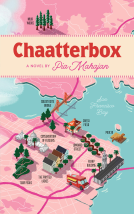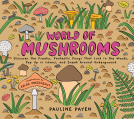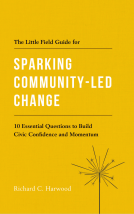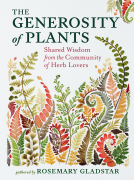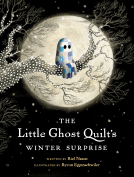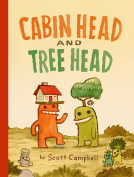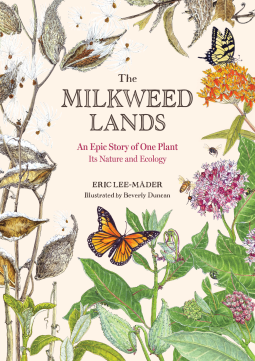
The Milkweed Lands
An Epic Story of One Plant: Its Nature and Ecology
by Eric Lee-Mäder
This title was previously available on NetGalley and is now archived.
Send NetGalley books directly to your Kindle or Kindle app
1
To read on a Kindle or Kindle app, please add kindle@netgalley.com as an approved email address to receive files in your Amazon account. Click here for step-by-step instructions.
2
Also find your Kindle email address within your Amazon account, and enter it here.
Pub Date 26 Sep 2023 | Archive Date 26 Sep 2023
Storey Publishing | Storey Publishing, LLC
Talking about this book? Use #TheMilkweedLands #NetGalley. More hashtag tips!
Description
National Outdoor Book Award Winner
Delve into this fascinating appreciation of milkweed, an often-overlooked plant, and discover an amazing range of insects and organisms that depend on it as the seasons unfold, with this collaboration between a noted ecologist and an award-winning botanical illustrator.
Available Editions
| EDITION | Other Format |
| ISBN | 9781635864366 |
| PRICE | US$20.00 (USD) |
| PAGES | 120 |
Links
Available on NetGalley
Featured Reviews
Eric Lee-Mader has written a spectacular much-needed book on milkweed and their environments and impact on biodiversity in a high-quality direct-to-point educational book on milkweed and habitat for which those plants provide. This book is in my wheelhouse for I used to be an educator about milkweed, establishing habitats, and supporting those who wanted to establish stands of milkweed or create meadow or habitat for pollinators. What I really like about Eric's book how comprehensive and detailed in pests and diseases of milkweed for it is not a plant for the faint of heart for it does have its share of, especially pests. The cover of the biodiversity of the use of milkweed in Eric's writing is perfect. Milkweed does not just benefit monarchs which Eric covers. Milkweed can also help in erosion, feed species in decline, and provide long-lasting stands of food for pollinators. The book covers it all, from seed to plant, to the biology of the plant, to how to germinate its seed and collect the seed. But what I most loved was his writing about the living milkweed plant.
The illustrator Beverly Duncan has added such an increased beauty and value to this glorious book. Often in books that are on an educational scale of a much-needed plant topic I won't be especially fond of an illustrated book and prefer photos over drawings but Beverly's art puts this book in an eye-catching category where your eye will be gravitated to the cover and remember the beautiful drawings. Just her drawing on the biology and structure of a milkweed flower is memorable alone. It evokes a feeling of a field sketchbook that one inspires to achieve but what the two have created together is simply inspirational.
As one could gather by now I adore this book, it's a great collaboration and Eric is very knowledgeable with a lot of years in the field and hands-on consulting to many habitat creations throughout the country and internationally.
I would like to thank NetGalley and the publisher Hatchette for the opportunity to read and review Eric Lee-Mader's The Milkweed Lands. We need this book in our work and it will transition to many age ranges.
A book containing everything you have ever wanted to know about milkweeds and some things you didn’t know that you wanted to know too! Beautifully illustrated this book explores the life cycle and uses of the plant as well as the importance of the ecosystem and not destroying plants for the sake of extensive farming. While this book could have taken a sad angle at what has been lost it instead takes a hopeful one showing the versatility of this plant and that it can be possible to reverse some of the damage done. I especially liked learning about the uses of milkweed in the USA during the Second World War.
Thank you to NetGalley and the publisher for sending me an ARC in exchange for an honest review.
I found this really interesting and enjoyable to read,
It's absolutely fascinating to learn more about these kinds of things and this really shows the impact that one plant can make
Calling all green-thumbed book lovers! This is the perfect book to read after a day spent in the garden. The Milkweed Lands takes the reader on a fascinating journey through time simply by using a common ditch weed. I’m not an ecologist or a naturalist, just a simple homeschool mother to several young children. But recently I’ve been enjoying more hikes and geology study, so I was excited to read The Milkweed Lands.
This book contains all you wanted to know and more about milkweed, its inhabitants, its pests, its part in our ecosystem. I liked that this didn’t read like a textbook and it kept my attention the whole time I was reading. The information is abundant yet easy to digest. This is a great book for those just looking to get their feet wet in the complexities of ecosystems or would likely be a comforting read for a more seasoned naturalist.
Along with the easy readability and great information inside the book contains several beautiful illustrations. I think this book would be a great gift for a green-thumbed friend, a beloved science teacher, or a young aspiring ecologist looking to begin reading more nonfiction.
Thank you to NetGalley and Storey Publishing for a free ARC in exchange for an honest review.
I was charmed by this book which takes one group of plants and explores everything about its ecosystem - habitat, uses, pollinators, and so on.
As milkweed is a plant found mainly in the Midwest, it's not one that was familiar to me (although other members of the Apocynaceae/Dogbane family, such as Vinca Minor, are common in UK gardens).
Alongside the text are beautiful illustrations - of the plants, of the fascinating monarch butterfly, which feeds on milkweed, of the stunning cobalt milkweed beetle and much more.
*
I received a copy of The Milkweed Lands from the publisher via NetGalley.
 Regina M, Reviewer
Regina M, Reviewer
I found this book very interesting about a plant I've heard a lot about but didn't know anything about except Monarch Butterfly like it. This book is a beautiful book about a very overlook plant that not only helps Butterflies exist but also attract insects that are also helpful in nature. After reading this book, I came up with a thought that maybe having these types of plants would help us in our garden because the insects would be eating milkweed instead of eating plants that we see as important. It would be great, after reading this book, that people came to understand that plants like milkweeds, which they think are weeds are very beneficial plants and that by keeping them in their gardens and it will makes the ecosystems and gardens healthier.
This book is easy to read and beautifully illustrated like all books I've read from Stoney Publishing and would be a beneficial for any gardener or nature lover.
I want to thank Storey Publishing, Storey Publishing, LLC and NetGalley for an advance copy of this overlooked plant that has many beneficial benefits.
** Read as an Arc copy on Netgalley
I can rave about this book enough, from the simplicity without leaving out such informative information…. Then the illustrations, they were hand drawn and added special. Highly recommend this book to any plant lover who like to really know about plants more so milkweed genre.
**The Milkweed Lands** by Eric Lee-Mäder 4 stars- This was a fun and easy to read book about the ecology of milkweeds! The author is a member of the Xerces Society so there’s a notable emphasis on insects which was fascinating as I don’t know a ton about them. The book addressed things like milkweed life cycles, insects that feed on milkweed and depend on it as a larval host, diseases that impact the plants, historical ranges and uses by humans, and conservation projects that have incorporated milkweed. Lovely little book with great illustrations as well!
Review has already been posted to Goodreads.
I loved this book so much! I am definitely going to buy it to put on my shelf to reread. The information is priceless and the illustrations are such beautiful artwork. This book contains everything you would like to know about milkweed as well as the ecosystems that it grows in. The information is not just about milkweed but also about the pests that affect it and the animals that spread the seeds and pollinate them. I would definitely recommend it. I would like to thank NetGalley and Storey Publishing for the opportunity to read this book for a fair and honest review.
 Abi A, Reviewer
Abi A, Reviewer
I’ve read a fair few nature books but I’ve never read anything quite like this. As the title proclaims, this is not about milkweed alone, but ‘milkweed lands’. The milkweed is a starting point and a point to which we keep returning while meandering past the various habitats and creatures across North America. This simple and prolific plant is used to tell a much bigger story, considering not just the natural world, but the history of America and the places of its people today, the ecological and nature writing blended with personal essays.
The writing is simple but enchanting and melodic, and I found myself rereading each paragraph several times. This book is a paean to a single plant - “humble and handsome milkweed, with its multitude of lost titles” - and, by extension, to the natural world. Lee-Mader approaches the milkweed with reverence and wonder. When discussing efforts to eradicate milkweed, he describes it as “gorgeous, minimally toxic, [and] native”. Even when he refers to milkweed’s “feral populations”, his tone is one of love.
His attitude is one of care to the flora and fauna around us, expressed to us by focusing on a single plant: when discussing weeds, he describes the word’s original meaning as “speak[ing] of meadows themselves, places of pastures and wildflowers, places of life.” We are encouraged to notice the minutiae of life around us: the milkweed itself, but also those wholly or partially dependent on it, like the monarch butterfly and the white-footed mouse, and those who live around it, including fly larvae, fungi and bacteria - “beautiful, fragile” things “mostly either ignored or maligned” who “lead interesting, secretive lives”. What others have criticised as “Tumblr blog post writing,” I found to be the writings of someone deeply entranced with and in love with the natural world, who wanted to share the simple, everyday magic he sees around him. He wonders if insects in “stationary torpor” during the winter “are dreaming of summer”. We are encouraged to change the way we see humanity’s place amongst the natural world. At times, the loosely linked short essays can seem a little disjointed, but I think this expresses the author’s excitement about milkweeds and the vast worlds they represent, their shortness encouraging the reader to research further.
The reasons behind Lee-Mader’s love of milkweed become apparent as the book progresses. Not only is he a passionate ecologist, but he grew up “as a child of poverty” in precisely the rundown American environments in which milkweed thrives, playing in the “old dumping ground used by the town road crew… a place of box elders, thistles, and common milkweed amid piles of heaped concrete slabs, jagged in shape and halfway embedded in the ground.” At other times, he played amongst the braided tributaries of the Mississippi River and “discover[ed] beautiful, otherworldly fish in the toxic waters, amid the regal glory of summer swamp milkweed… a kind of Technicolor childhood experience, a secret church of mud, butterflies, and pink flowers.” The reader gets the sense that he feels an affinity to swamp milkweed, a “muck plant”, as he writes that he, too, “lived out much of [his] childhood in mucky places”. The “gritty, perverse perseverance” the author attributes to milkweeds and other “ditch weeds” could also apply to him. He later describes the fish known as “rough fish… the equivalent of ditch weeds” as “survivors” of a hostile environment, another description which could apply to him, too.
Rather than outgrowing this environment and coming to dismiss it, however, Lee-Mader instead shares the love he learned to have for it. He tells us that “despite [milkweed’s] pedigree as ditch weeds… or odd botanical outcasts of harsh and dismal places, even the most commonplace milkweed flowers have a complexity comparable to that of rare orchids. They are among the most elaborate flowers in the plant kingdom.” Just as we shouldn’t dismiss ‘ditch weeds’, we shouldn’t dismiss the people living in these environments. Lee-Mader clearly remembers his origins and the company of the natural world he had there - “a half century on, I’ve managed to stumble with dumb luck into a better life for myself. Unfortunately, the milkweeds haven’t” - and now wants to share the beauty of these forgotten and dismissed places. As another person who grew up in poverty, this time on the other side of the Atlantic, this is something I have written about, too (https://moxymagazine.org/essay-the-old-road/). Even when we move on to better places, we still get homesick from time to time. For Lee-Mader, at least he has the company of the ubiquitous milkweed wherever he goes across America. Just as the milkweed has followed Lee-Mader throughout his life, we now follow it through this book.
The book is, of course, also gorgeously illustrated. The illustrations are not only beautiful to look at, but genuinely aid understanding of the book’s text. Just when you think it would be useful to know what something looks like, you turn the page and there it is. The section on the structure of milkweed flowers, in particular, was absolutely fascinating, and highly aided by the illustrations. My only real criticism of the book is that the placement of some of the illustrations could have been better; but perhaps this placement will make more sense in the print version of the book.
Reading this also made me realise just how different America really is, in all aspects, from the UK, despite our apparent similarities.
I highly, highly recommend this book. It is a gorgeous, loving symphony, and, when so much nature writing abounds, it is something a little different, and a little more personal.
The Milkweed Lands
Eric Lee- Mader
Pub Date Sept. 26, 2023
Storey Publishing
Thanks to the author, publisher and NetGalley for the ARC of this book in exchange for my honest opinion.
This is by far the best illustrated book I have read on this topic. This is a well written- fascinating book on the complex ecosystem that is supported by the Milkweed plant, I learned a lot about the plant and its uses in the Second World War as well.
I highly recommend this book,
This was and enjoyable, educational read, and the illustrations are beautiful. I knew nothing of milkweeds before reading this other than than its relationship with Monarch butterflies. This book laid out how important a single organism can be to an ecosystem. From mouse nests to bole roads, butterflies to many different milkweed bugs, and many more. I also never knew about oleander aphids and how they live birth already pregnant offspring??? This book also showed how human interactions can affect the environment -- from overfarming to pesticides to genetically modified organisms. All have affected the milkweed plant's survival. But there are conservationalists out there putting in the work to revitalize and regrow. This was wonderfully interesting,
 James L, Media/Journalist
James L, Media/Journalist
What an amazing book! Short in length, just 113 pages, and long in detail through its text and illustrations. Here is a perfect partnership between ecologist Eric Lee-Mäder and superb botanical illustrator Beverly Duncan. The story focuses on the plant's development and environment throughout the seasons. Its contents are: Foreword by Joan Edwards, Preface - The Milkweed Lands, 1 A Thousand Forgotten Names in the Bee-Pastures, 2 Summer Currents, 3 Autumn Rot & Parenthood, 4 How to Start Milkweed from Seed.
Nature lovers, here is a treasure!
A beautifully illustrated comprehensive book on milkweed in North America. Information includes history, botanical information, variety of species, insects that depend on the plant, milkweed through the seasons, geography, Monarch-specific information, propagation, and much more. Lovely book on milkweed ecology that will be of interest to naturalists and environmentalists of all ages. Thank you to NetGalley and Storey Publishing for the ARC. Opinions are my own.
 Sarah F, Reviewer
Sarah F, Reviewer
You may have heard of milkweed, but what do you really know about milkweed?
The Milkweed Lands will tell you everything you ever wanted to know and also what you didn't know you wanted to know! This is a very detailed book about a critical part of the ecosystem.
If you don't have a milkweed plant before reading this book, you are sure to be on the lookout for one afterwards.
The first thing which struck me about the book was the concise information covering the history of Milkweed, its environmental contribution to the land, and how this is not simply about butterflies, but about the ecology on a much larger scale.
Filled with beautiful illustrations of both the plant, and the animals, the book serves as a reminder of how nature's beauty is found everywhere, and not simply in carefully curated areas.
"The Milkweed Lands" is a vital resource, not only in libraries, and schools, but also at home, for homeschoolers, nature enthusiasts, gardeners, and an everyday reminder of the impact Milkweed has in everyone's lives, both seen and unseen.
Sharing how to propagate milkweed seeds at the end, was a fitting end, and a hopeful reminder for others to look at adding the milkweed more in their flowerbeds and gardens, or simply to their yards. There is a way to help play a role in preserving the local ecology where people live, and sometimes, as the book reminds us, it can start with taking the first step.
I can't give over the beauty of the illustrations, and it captures the love the author has for this amazing plant. The illustrations capture the sheer beauty Nature has provided humanity, and the way the author writes, with a mix of scientific knowledge, and anecdotes, creates a helpful resource for those who are unfamiliar with the milkweed, and its environmental impact.
The book also serves humanity as a vital reminder, a weed isn't simply a weed. Too often it is easy to mow a lawn or look at a lot overgrown with plants as an eyesore, and the book challenges the readers, especially those in urban settings, and not as connected with nature, to relook around them, and their understanding of "what is a weed".
Also poignantly, is how the author reminds those especially living in suburbs, the "unsightly weeds" are also homes to some of nature's most vital contributors to the sustainability of the ecology. While to some those are weeds, for the Earth's smallest habitats, such as the Queen Bee, those masses of weeds, also serve as winter dens which concrete and immaculate cared yards can't easily provide.
Especially eye-opening is the chapter, "The Living Soil", and reminder dirt isn't simply dirt, or a place for grass, but a few inches within, it is home for many or as the author writes, a "terrestrial coral reef" which is often saturated in many suburbs with herbicides, and other chemicals. While butterflies and other plants are pretty, there is much more beneath the surface, and the illustrations later in the book highlighting areas such as "Deep within the Prairie Root Zone" is a sobering reminder, beneath the torn-up soil, and the eagerness in some areas to replace grass and dirt with concrete, there is a different world and habitat which has direct effects on the ecology.
"The Milkweed Lands" is a perfect balance between science, nature, ecology, botany, reference, education, and a reminder on the scale of Thoreau that there is much more to the world humanity often misses, and in the case of the milkweed, it's not simply butterflies which are affected, but an inter-connected, and dependent ecological system which is all tied together in a delicate web of life.
I want to thank Storey Publishing, Storey Publishing, LLC, and NetGalley for the opportunity to read and review a copy of this book.
What a delight! The Milkweed Lands is by far one of the most informative nature books I have read. It doesn't focus on just the plants and their importance, but on the ecology of everything surrounding them, their pollinators, and life cycles for both. It was easy to read, full of beneficial information, and the illustrations were stunning. This book is a wonderful resource for schools, gardeners, nature lovers, as well as at home. I would recommend this book to everyone.
Thank you to NetGalley and the publisher for sending me an ARC in exchange for an honest review.
Beautifully illustrated, a fascinating book with lots of detail and interesting information about a plant and it’s impact I personally never really thought about before. I particularly loved the illustrations in this book, they were just so fantastic.
This book covers pretty much everything you’ve ever wanted to know about the milkweed plant.
This book is adorned with lovely botanical illustrations.
I chose to review this book because I enjoy growing milkweed in my backyard for the Monarch butterflies. I now know after reading this book my milkweed plants are a complex plant that not only provides food for my caterpillars but other insects too.
 Miska R, Reviewer
Miska R, Reviewer
When I saw this book advertised in Booklist I knew I had to read it. I love native plants, but I especially love the pollinator host plants like Joe Pye and Milkweed. I immediately squealed when I saw it on Net Galley, where I received it for review for free.
I have to say, it did not at all meet my expectations.
It exceeded them in every way possible. From the amazing botanical drawings, to the information presented I was absolutely delighted while I read. And I did read this in a single night, the first time. Vowing I would read it for enjoyment before I took down notes. I blew through it, hungry for more information. I was hoping to learn about my favorite variety, Swamp Milkweed, to which I was excited to see a section dedicated to just that, but I also walked away with the burning desire to look up so many more varieties listed in the book.
I read it the next night, taking notes for my Botany Studies, found myself marveling again, as though it was the first time I read it.
I would love a physical copy of this title, and it is going to be on my Christmas List for my husband or kids to pick up for me. As a mom in her 30’s they never know what to get me, and this is absolutely perfect.
I recommend to anyone who loves botany, or entomology, or who just loves flower gardening with native plants.
Note to the Author: this style of book and writing is perfect, easily digestible for the laymen or the beginner/intermediate scholar. I learned so much from this title, and even imparted knowledge to my history obsessed husband. Thank you for this work, it is both timely, considering the need, and well done.
I had a great time reading this book. I liked how it blended the ecological information about the milkweed plant with beautiful artwork. The book is structured into short chapters and include illustrations that support the text. I almost felt like a kid again reading this book. It made me think more about plants and the ecosystems that they grow in.
The Milkweed Lands is a joyous celebration of the critical plant for monarchs. It is the perfect book for anyone wanting to plant milkweed or just learn more about this amazing plant. This text explains the history of the hardy milkweed plant and how we can plant it to help revitalize it. The beautiful illustrations help enhance the knowledge. Lee-Madar gives insightful information regarding the organisms that rely on this amazing plant.
This book wasn’t quite what I expected, it’s much more artful and imaginative. I could feel the passion in the authors voice. I’ve already started planning my milk weed garden for the spring and have learned so much.
Thank you netgalley for the opportunity to read this.
 Celeste L, Reviewer
Celeste L, Reviewer
[4.5/5] As a gardener who recently planted milkweeds in the backyard, I was very excited to come across this book. In THE MILKWEED LANDS, Eric Lee-Mäder delivers an approachable summary about the plants themselves, their history, and the ecosystem around them. This information is accompanied by gorgeous illustrations by Beverly Duncan.
Lee-Mäder takes the reader through each season with the milkweed, sharing what the milkweed, as well as what the creatures around it, do during that time. I primarily picked this up to learn more about the actual plant. But I found its use during World War II quite fascinating. There is even text devoted to the etymology of the scientific name and how Eurocentric it is. The brief history of milkweed's presence on the lands of the United States also make one pause to think about the loss of botanic diversity resulting from mass crop growth. Part of this history includes how popular milkweeds used to be for honey production.
I was also very interested to learn more about the types of insects I see on milkweeds. To my delight this book has a full illustrated page of insects associated with milkweeds. However, I do wish the author had presented more information about these bugs. In particular, I would have liked to read about the types of insects one might see based on where in the U.S. someone lives.
Overall, though, I thoroughly enjoyed reading THE MILKWEED LANDS. It's a book I think many hobbyist gardeners would appreciate, particularly those interested in creating pollinator gardens or rewilding their yards. The beautiful illustrations in THE MILKWEED LANDS, as well as Lee-Mäder's poetic waxing about the plant, make reading this book even richer.
[This review will go live on my blog on Sept. 18.]
Thank you to the author, Eric Lee-Mader, Storey Publishing, and NetGalley for providing me with a free ebook in exchange for an honest review.
I loved this short book (120 pages) with its many beautiful illustrations! I am from Coastal Southern California, so I had a very limited view of the part that milkweed species play in the environment. This book celebrates so much more about the wonderful plant species that collectively make up milkweed! It discusses the MANY creatures that rely on milkweed for food or protection or egg laying sites, including Monarchs. It discusses the difficulties in trying to grow milkweed for seed in California's Central Valley, in which wild milkweed has become scarce. After an introduction, the book is divided into sections by seasons. Each section discusses what milkweed is experiencing during that season and which other living creatures are dependent upon it.
This wonderful little book is so chock full of scientific information, and yet it maintains a light style like a walk through a milkweed meadow on a sunny summer day!
I recently attended a birthday party at a house newly landscaped with different milkweeds and native plants in its front yard. Monarch butterflies greeted arriving guests and showed us the way to the party. Many of us hear milkweed mentioned in the same breath as Monarchs, but little did I know what a party those milkweed plants host for so many different organisms and ecosystems!
After reading this book, I know quite bit more and am inspired to plant milkweeds in my own front yard. The contents are an overview of milkweeds through the four seasons paired with beautiful scientific illustrations. The writing touches on science, history, memoir, and hope for the future.
This book would be an informative and inspiring gift for any ecologically minded person in your life, even a child (maybe 8 and up). I wish it had been published before the birthday party at the suburban milkweed haven, because it would have made the perfect gift!
I received an advance reader copy of this book from NetGalley and Storey Publishing in exchange for an honest review.
Prior to the reading this book, I knew milkweed's role in the Monarch butterfly species but nothing else. I had no idea the huge role it plays in the ecosystem, how many different varieties of it there and the extent of the herbicide war there is on it.
The illustrations in this book are so beautiful, and this book could even double as a coffee table book because of the abundant illustrations.
I always appreciate books about nature and plants that can help me learn more and shift my mindset, and this book does just that. Weeds are a lot more than things taking up unwanted space in your flower bed, and we should learn more about them, appreciate them and allow spaces for them to grow naturally and contribute to the ecosystem.
Thank you, NetGalley and Storey Publishing for the ARC.
Readers who liked this book also liked:
Rosemary Gladstar
Home & Garden, Outdoors & Nature, Religion & Spirituality
